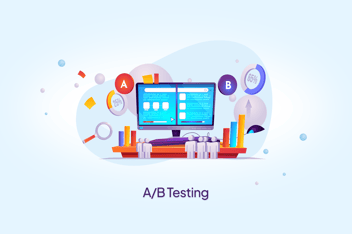“Process” describes how things are done; it provides the focus for making them better.
If you focus on the right processes in the right way, you can design your way to a successful outcome.
What is a process?
It’s a series of progressive and interdependent steps by which a result is obtained. It’s important because it describes how tasks are achieved and also provides a focus for making them better. Effective process execution can translate towards how successful the outcome will be. Focusing on the right processes, in the right way, can design your way to success.
What is the need for following a process?
A project done without a process is truly an unorganized way to work. You can start following a standard process because it’s the right way to do it. Everything needs to be done in an organized manner.
Bringing processes into the domain of quality control and testing ensures that all scenarios and cases are recorded and effectively processed to reduce errors.
What are the benefits of following a process?
The main benefit is that we will be able to do things in an effective and efficient manner. That eventually results in better productivity and a quality end result. As we reduce the risk factors, we ensure that everyone is on the same page moving towards a quality-oriented project. Consistent quality can be achieved in each and every task after doing things in a planned and designed manner.
Tools that improve processes:
There are many off the shelf tools in the market that help organize a project. Some of the tools that can help implement processes into your project management life cycle include -
- Jira is a bug and issue-tracking tool that allows users to track and resolve issues. It is a fully customizable platform that helps teams of all sizes manage their work.
- Confluence is a shared workspace that allows teams to collaborate better on various projects. It helps teams create, store and share information efficiently so that they can make decisions faster and meet customer's needs more effectively.
- LambdaTest is a cloud-based cross-browser testing tool that allows performing cross-browser testing for web applications across more than 2000 browsers, operating systems, and devices. We can perform both manual and automated cross-browser testing using LambdaTest. This tool can be used for responsive testing on iPad and iPhone devices as well.
- Test case preparation is done using the in-house tool that helps us to achieve maximum coverage in all scenarios. It’s reusable and improves the quality of software and user experience. To an extent, it helps us from missing out on edge cases.
- Automation testing is the process of testing software to ensure that it meets the requirements. It tests for bugs, defects, and any other issues that can arise within a particular software. It’s essential as it’s productive, time-saving, and helps us in fast delivery and development with more accuracy.
The three main automation tools that we are working on are Selenium, Cypress, and Playwright.
- Selenium is used to automate tests across browsers for web applications. It’s an open-source tool that helps to ensure high-quality web applications.
- Cypress is a JavaScript test automation solution used for web automation. It allows us to create web test automation scripts.
- Playwright improves reliability and simplifies test authoring. It’s a relatively new open-source cross-browser automation framework for end-to-end testing.
- Jenkins with Selenium WebDriver can also be effective in running tests efficiently and achieving the goal of continuous integration. It helps fulfill the complete software development life cycle starting from development, deployment, testing, monitoring, and releasing.
Conclusion
For effective testing and quality control with processes, you can start working with the tools. The implementation of the tool, would further allow you to get things done in a more efficient and effective manner.




